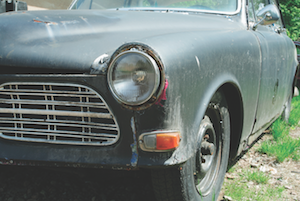“We are always looking for wines that express unique personality and character,” says Casa Silva winemaker Mario Geisse. “That’s why we look for new regions: to plant the same varieties, with the same excellent quality, but having different wines as a result.
“An example of this is our Lago Ranco Sauvignon Blanc from Futrono. It is more elegant and light in comparison to our Cool Coast Sauvignon Blanc from Paredones. They are both high quality wines, but with distinctive characteristics according to each terroir.”
Casa Silva was a pioneer of developing the coastal Colchagua region with its Paredones vineyard. “Due to wind, altitude and granitic and quartz soils, the vines – which are planted just seven kilometres from the Pacific ocean – need permanent supervision,” says Geisse. “The ‘vaguada costera’ (coastal trough) phenomenon creates special conditions for Sauvignon Blanc, Chardonnay, Pinot Noir, Syrah and Sauvignon Gris, bringing them a high class acidity and minerality. The proximity of the ocean regulates the daytime temperatures within the vineyards, helping to preserve the natural aromatic flavours and distinctive attributes of each variety.” Casa Silva started out here as recently as 2009, and so far the results have been impressive.
Boutique producers
The second is the emergence of smaller, more boutique producers, together with larger companies starting smaller, more terroir-focused side projects. For a long time, Chile’s safeness in terms of wine flavour was partly a factor of the dominance of large companies.
Typically, rich individuals would own a huge 300ha vineyard and winery, often as a side activity to their main business interests. It’s hard to be innovative when you are operating on such a scale, especially when conservatism pays in the marketplace.
This is beginning to change. Of particular note is the MOVI movement, which has banded together many of the interesting small producers across the country.
“I would like to highlight the current growth of little wine producers in Chile,” says Mario Geisse. “Only a few years ago Chilean wine was based on huge wineries; today you can find a high range of little and medium wineries. From garage projects to cooperatives, the market is growing and it is a very exciting time.
“These producers are more involved with the community, bringing them closer to the wine industry and nurturing the local wine culture with a different perspective,” says Geisse.
Picking earlier for reds
The third factor is the move away from picking late and using lots of new oak, something that has caused Chilean reds to take on a samey sort of character. The journey that one of Chile’s most important winemakers, Marcelo Papa of Concha y Toro, has been on is particularly interesting in this regard.
“My concern is that for the past 10-12 years, we in Chile and also many producers worldwide have been pushing maturity further,” says Papa. “We have been making wines with higher alcohol levels, more extraction and more new oak in order to make a blockbuster wine, not sweet in terms of sugar but sweet in terms of feeling.” Papa says he grew a bit tired with this style, and in 2010 he began experimenting, first of all with picking earlier, and then with using large Italian botti of 5,000 litres rather than small oak barrels.




